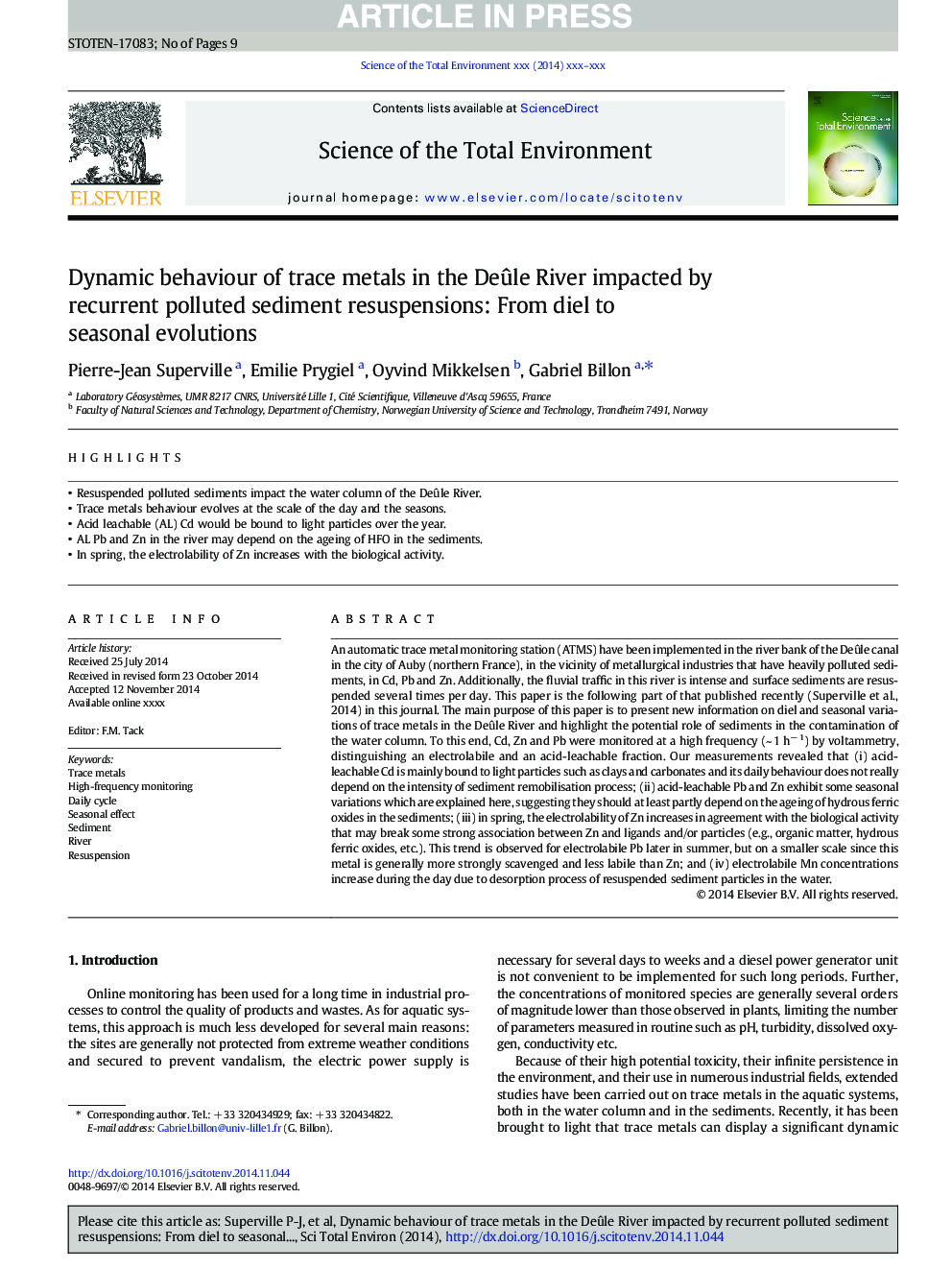| Article ID | Journal | Published Year | Pages | File Type |
|---|---|---|---|---|
| 6327791 | Science of The Total Environment | 2015 | 9 Pages |
Abstract
An automatic trace metal monitoring station (ATMS) have been implemented in the river bank of the Deûle canal in the city of Auby (northern France), in the vicinity of metallurgical industries that have heavily polluted sediments, in Cd, Pb and Zn. Additionally, the fluvial traffic in this river is intense and surface sediments are resuspended several times per day. This paper is the following part of that published recently (Superville et al., 2014) in this journal. The main purpose of this paper is to present new information on diel and seasonal variations of trace metals in the Deûle River and highlight the potential role of sediments in the contamination of the water column. To this end, Cd, Zn and Pb were monitored at a high frequency (~ 1 hâ 1) by voltammetry, distinguishing an electrolabile and an acid-leachable fraction. Our measurements revealed that (i) acid-leachable Cd is mainly bound to light particles such as clays and carbonates and its daily behaviour does not really depend on the intensity of sediment remobilisation process; (ii) acid-leachable Pb and Zn exhibit some seasonal variations which are explained here, suggesting they should at least partly depend on the ageing of hydrous ferric oxides in the sediments; (iii) in spring, the electrolability of Zn increases in agreement with the biological activity that may break some strong association between Zn and ligands and/or particles (e.g., organic matter, hydrous ferric oxides, etc.). This trend is observed for electrolabile Pb later in summer, but on a smaller scale since this metal is generally more strongly scavenged and less labile than Zn; and (iv) electrolabile Mn concentrations increase during the day due to desorption process of resuspended sediment particles in the water.
Related Topics
Life Sciences
Environmental Science
Environmental Chemistry
Authors
Pierre-Jean Superville, Emilie Prygiel, Oyvind Mikkelsen, Gabriel Billon,
